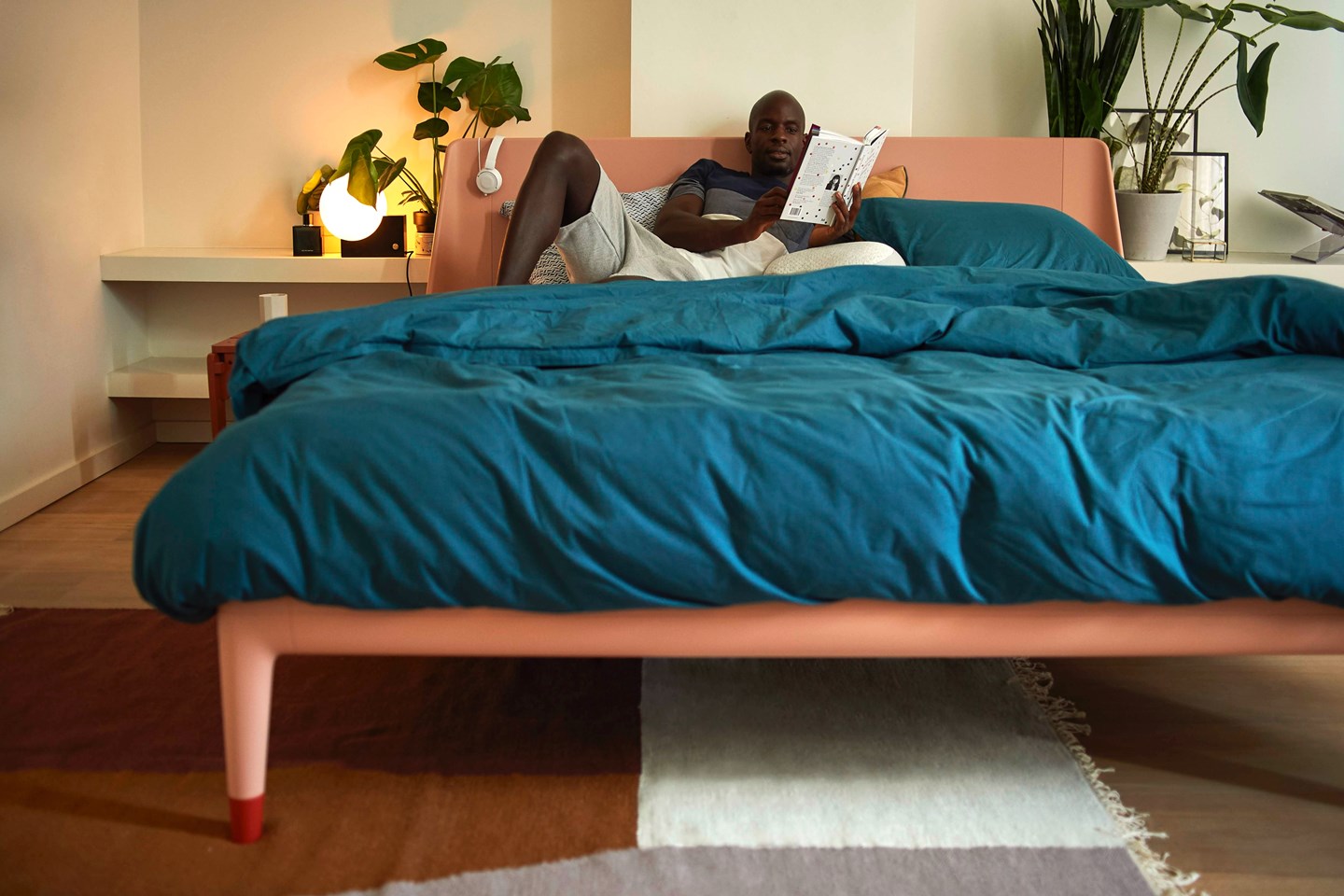
Category
Lifestyle
Lighting tips to support your mental health at home
Posted by AMH Team
6m read time
Jun 23, 2022
Good lighting, both natural and artificial, has a major impact on our mental health. It can help reduce depression and seasonal affective disorder while boosting our sleep and circadian rhythms, giving us more energy throughout the day. On the other hand, bad lighting can quickly derail our well-being and lead to negative effects such as stress, anxiety, eye strain, headaches, and fatigue. For this World Wellbeing Week 2022, we've assembled lighting ideas for every room to support your mental, physical, and emotional health wherever you are at home:
Bedroom: Soft, warm lighting (and no device screens)
You’ll spend about a third of every day in the bedroom, though you might not be awake most of the time. That’s no excuse to skimp on ambiance, though. The right atmosphere allows you to unwind before bed, pushing the stress of the day away. Lighting is a critical component to maintaining a feeling of zen in your bedroom.
Opt for bedside lamps with warm temperatures in the 2,700 to 3,500 Kelvin range. Warmer temperatures evoke feelings of calm and tranquility, so they’re ideal before bedtime. Many lamps even offer adjustable temperatures so you can find the perfect brightness for you. Don’t forget to draw the blinds or shades before you go to bed. Doing so keeps out any unwanted light from outside, including the sun hitting your face before it’s time to get up.
Also, try to reduce your screen time before bed. The blue light of TV and phone screens can trick our brains into thinking we should still be awake, and routines such as mindlessly watching TikTok videos or doom-scrolling Twitter make our minds race instead of settling down for sleep. Instead, read a book or sip some herbal tea in bed, reflecting on something you accomplished during the day. That will put you in the right place for a good night’s sleep.
Want to level up your bedroom even more, all while improving your home’s air quality and your personal social life? Check out our annual bedroom refresh tips.
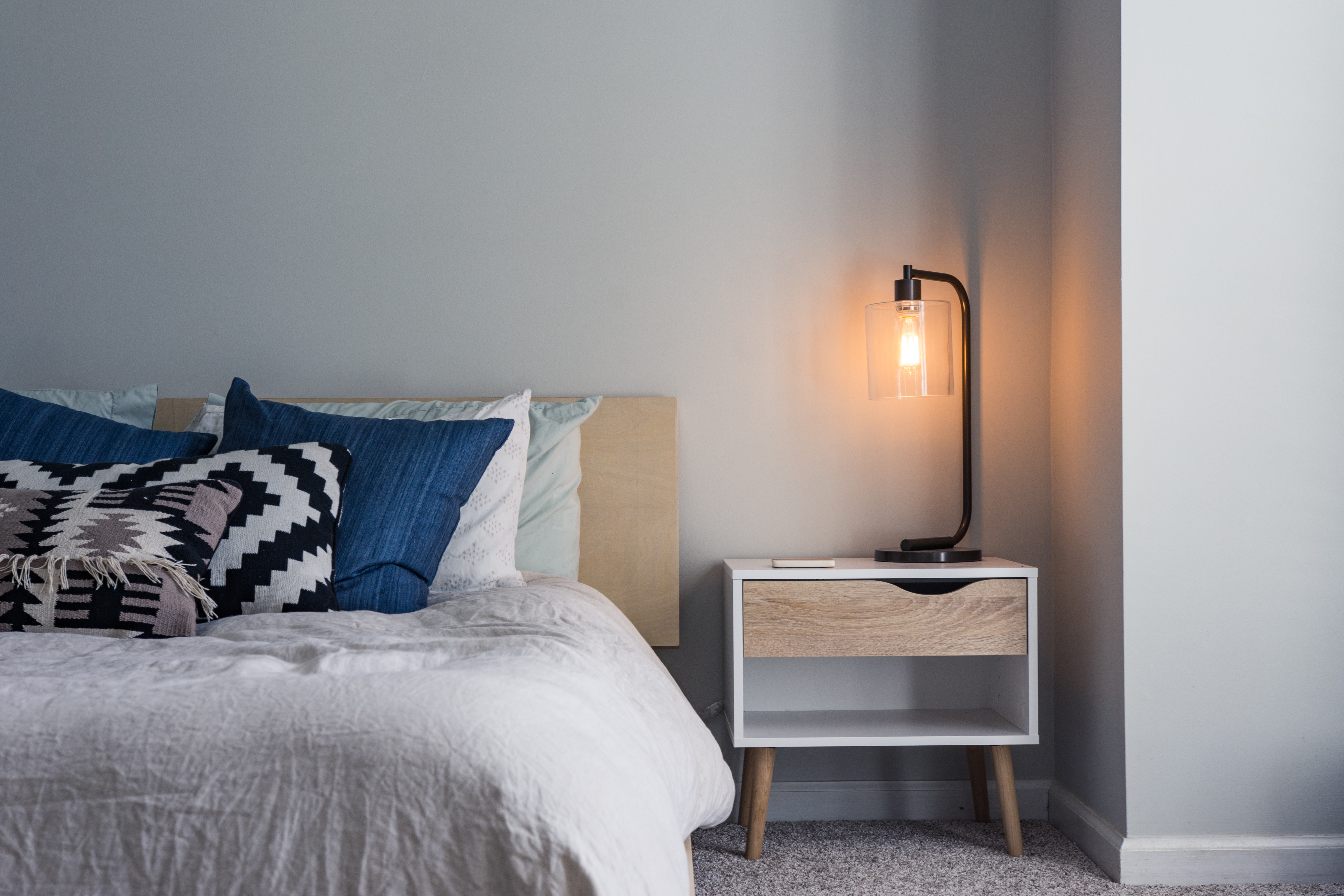
Bathroom: Bright accent lights
The bathroom is often where you get ready for the day. Trying to manage a shower, shave, makeup, or any other morning routines in the dark is an exercise in futility (and possibly a bit of pain). Luckily, you can avoid all that by getting the right light for your bathroom.
Adding a small counter lamp with halogen light bulbs can offer bright, crisp lighting that highlights skin tones most accurately. Whatever type of bulb you get, the Illuminating Engineering Society recommends aiming for between 20 and 50 lumens per square foot of the bathroom. Try to keep lighting at face level to avoid shadows, which makes it harder to evenly groom.
Of course, if nature calls in the middle of the night, you might not want to blast your eyes with a full-room light. In those cases, an LED night-light can help you adjust to the dark room without making your body think it’s time to get up.

Living room: Layers of light
The living room typically serves as a main hosting area for guests. As a result, it must be functionally diverse, capable of acting as a movie theater, a game night room, a place for conversation, and much more. Since the purpose of the room may change, having flexible lighting is a good idea. That means layering to address the main types of living room lighting: ambient, task, accent, and decorative.
Your living room likely already has the ambient lighting down pat with overhead ceiling lights or a chandelier, but you can implement other lighting to suit your style. For example, an LED light strip placed behind your television will reduce the strain on your eyes, floor lamps with a flexible arm help with individual tasks like writing, reading, puzzling, or sewing, and stained glass lights add some extra flair to the room.
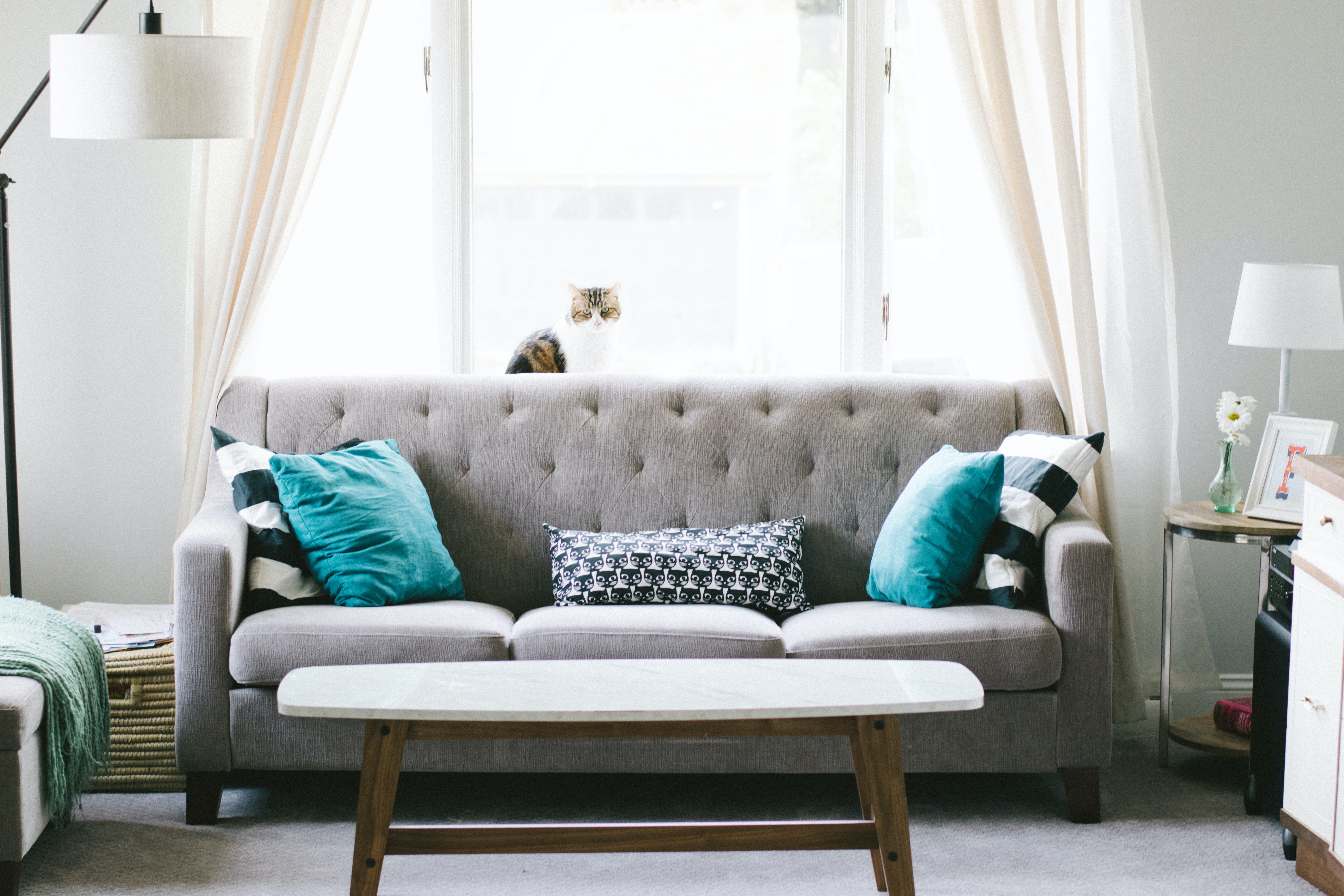
Kitchen and dining room: Mood lighting
Think about the last time you went out to a restaurant. Were the lights extra bright, highlighting all the food in front of you and the diners nearby? Or was the environment subdued and dim, requiring you to squint just to see the menu?
That ambiance is actually backed by science, since lighting plays a role in how we consume food. Muted or lower intensity lighting causes us to eat more slowly, while bright lighting increases the speed of eating. Whether you’re cooking at home or ordering takeout, dim lights may help keep your portions under control, since you’re not eating as quickly.
Using a lamp with warm LED bulbs adds a more personal feeling without making you feel like you’re dining in the dark, and string lighting is an easy and inexpensive way to create a cozy environment for date night.
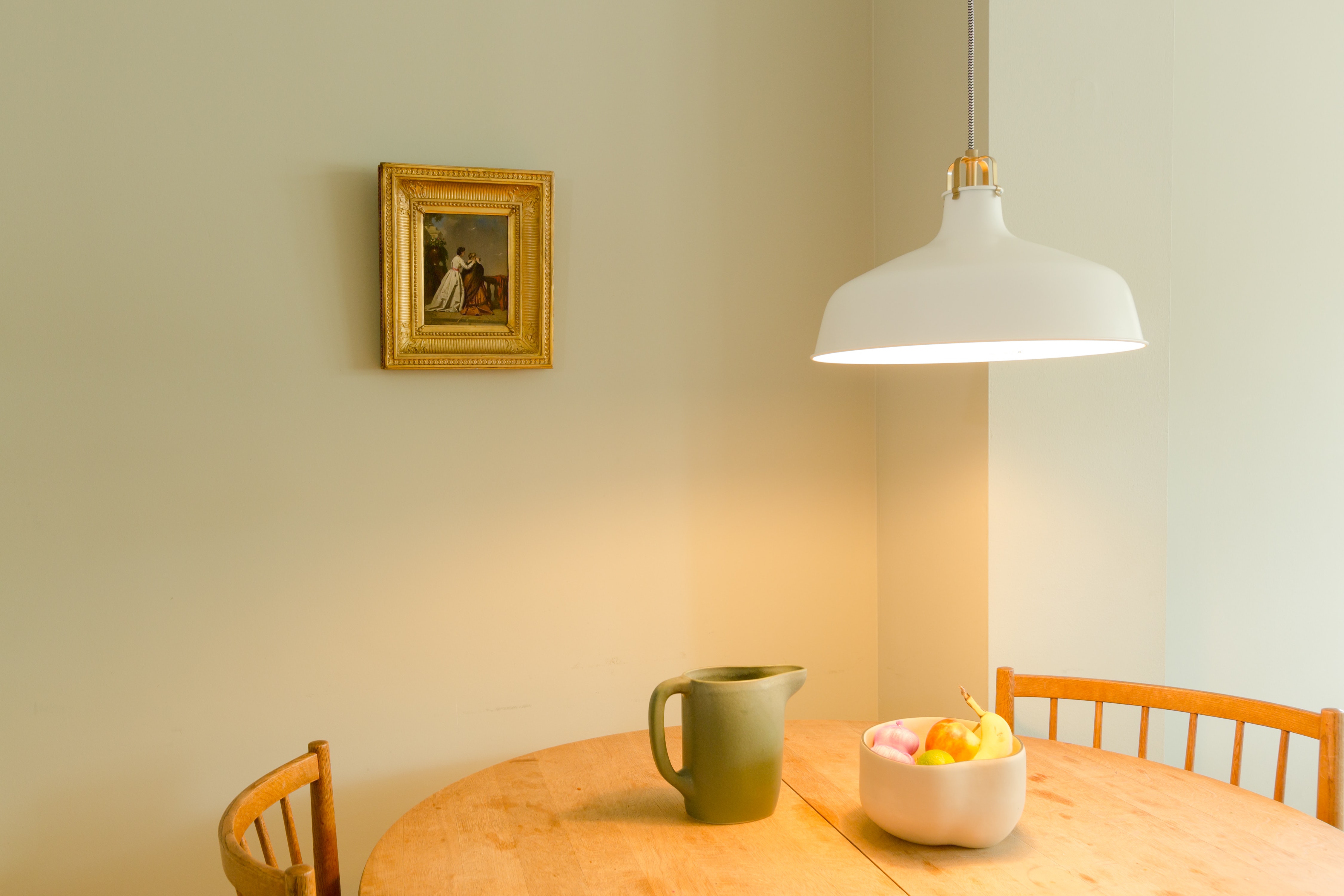
Office: Light therapy lamps
Light therapy lamps can help treat seasonal affective disorder, depression, and sleep trouble. These lamps mimic outdoor light, and research show this type of light causes a chemical change in your brain, potentially improving your mood.
Some of the best light therapy lamps are highly compact, offering flexibility throughout the office. Place them on your desk or end table to provide an extra boost in the morning or afternoon. And when harsh winter months bring dark skies earlier in the day, these lamps keep you focused on what you need to get done instead of the dreary view outside.
Whatever size you get, light therapy lamps should produce minimal UV light and provide an exposure of no more than 10,000 lux of light. Need some inspiration for the right kind of lamp? These suggestions from Verywell Mind shine brightly.
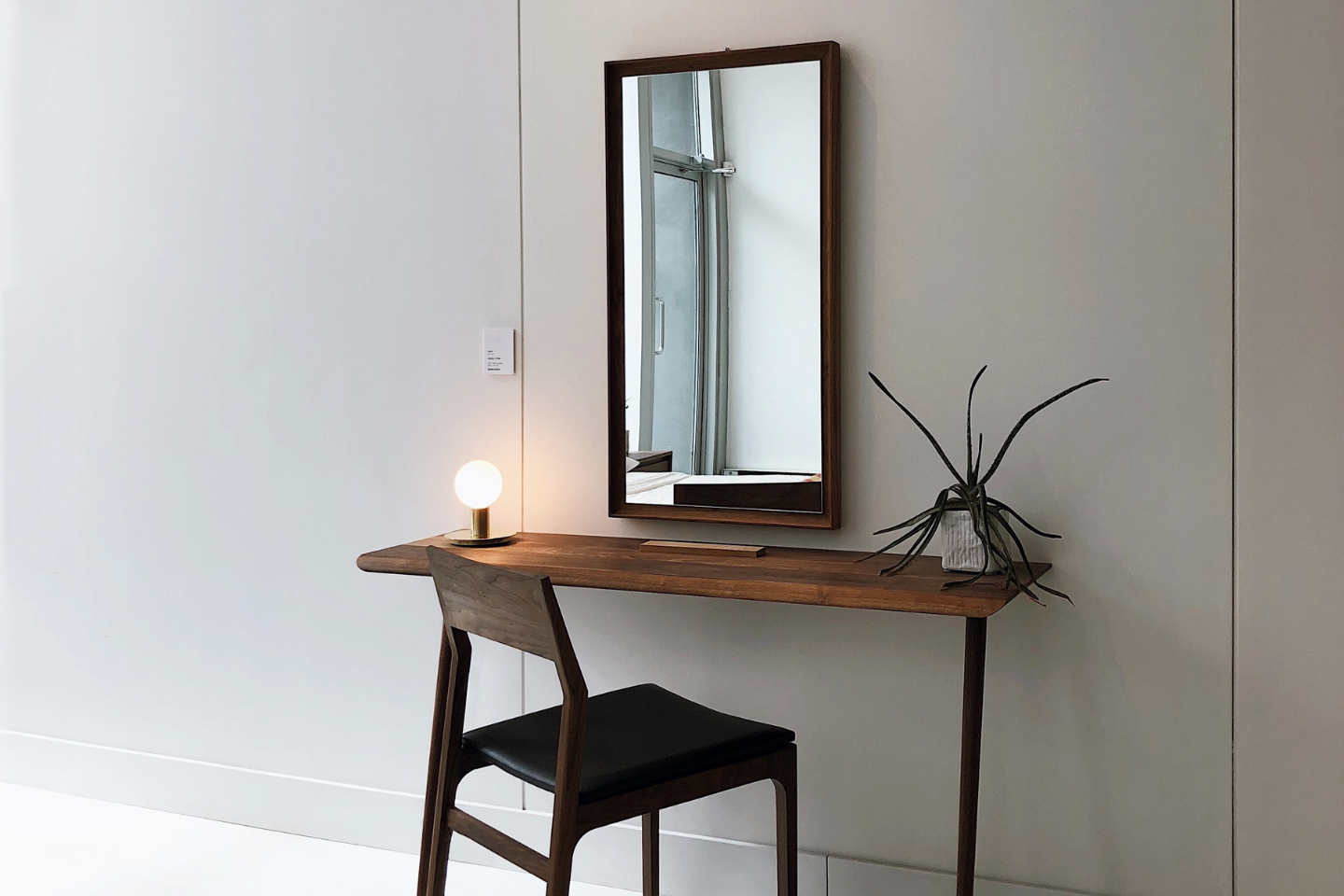
3 more lighting tips for improving well-being
Light plays a more important role in our well-being than we realize. Here are three other tips to ensure your home puts you in the right mindset.
When possible, introduce natural sunlight into a room.
Sunlight provides our bodies with nutrients they need, and may also bring ample benefits such as better sleep, lower blood pressure, stronger bones, and improved symptoms of mental health conditions. If you can, position a desk or reading chair near a window for a little natural lighting.
Don’t be afraid of portability.
A new trend in lighting is portable, cordless lamps. Rather than requiring a nearby outlet, these lamps use a rechargeable battery. They’re a great option for lighting up areas of your house that don’t get a lot of natural light, from basements to nook spaces.
Showcase your personality.
Lamps are a great way to highlight your unique spirit. Want to show off the team you support? Try an adhesive lamp decal. If you’re a fan of the ocean, how about a lamp that has a shark biting it? You’re only limited by your imagination, and a unique design will entertain your guests.
Now get out there and shine!
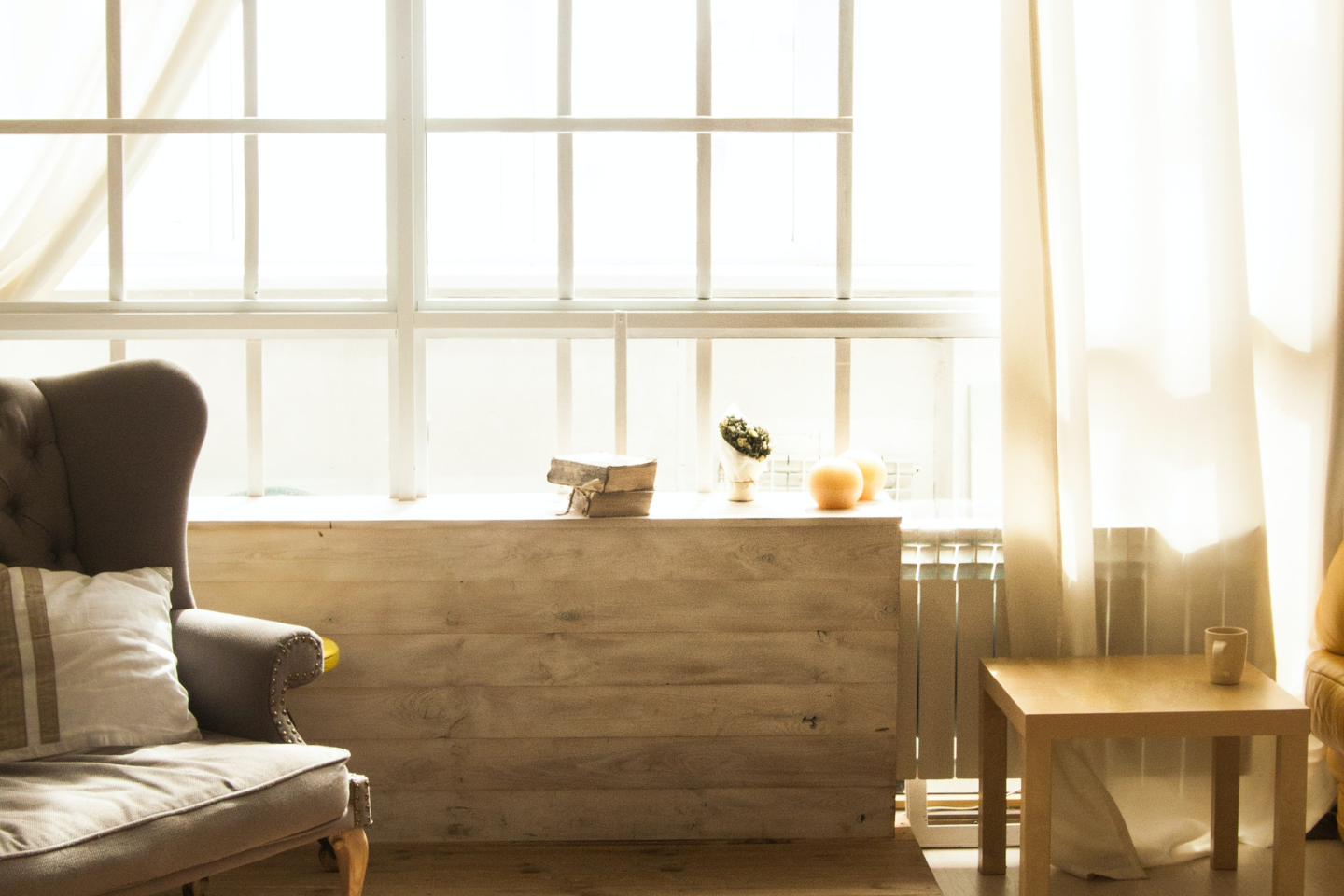
Note: This content does not constitute medical advice and is not a substitute for professional medical advice, diagnosis, or treatment.
© 2025 American Homes 4 Rent, LP
All graphics, images, drawings, plans, photos, details, and videos, along with all artistic concepts and depictions in digital renderings and virtual tours and stagings, are for illustration purposes only. The actual appearance and features of the properties and communities may vary. Please verify all community and property details prior to signing a lease. American Homes 4 Rent®, AMH®, AH4R®, Let Yourself In®, AMH Development®, American Residential®, and 4Residents® are registered trademarks of American Homes 4 Rent, LP. 4Rent℠, AMH Living℠, and 4Communities℠ are service marks of American Homes 4 Rent, LP. AMH refers to one or more of American Homes 4 Rent, American Homes 4 Rent, L.P., and their subsidiaries and joint ventures. In certain states, we operate under AMH, AMH Living, or American Homes 4 Rent. Please see www.amh.com/dba to learn more.



